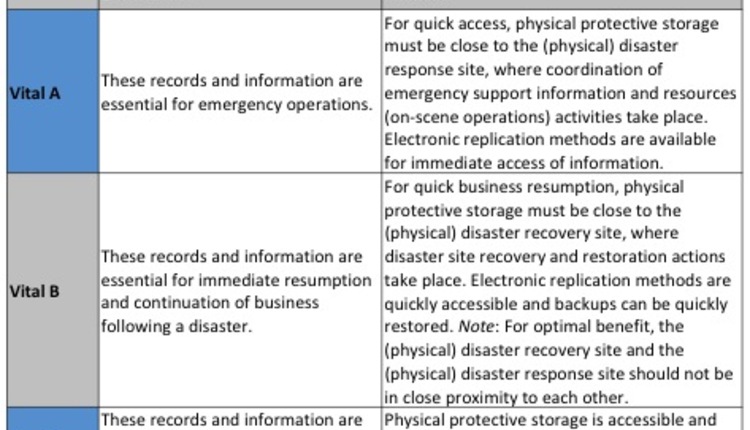The impact of natural
disasters, such as floods, hurricanes, earthquakes, tsunamis and other storms,
on our very lives and that of our businesses should not be taken lightly.
Superstorm Sandy, which battered the Eastern seaboard of the US this past
October, is already being blamed for an estimated 62 billion dollars worth of
damage, second only to the loss inflicted by 2005's Hurricane Katrina. Affecting
millions of households and businesses, Sandy shut down cities along the
Northeast, mass transit systems and even the New York Stock Exchange. This
particular storm, in fact, hit pretty close to home, forcing the cancellation
of our annual conference, the DOCUMENT Strategy Forum, as well.
The debilitating costs in
the wake of natural disasters are certainly not dissipating but are only
rising. In 2011, the Centre for Research on the Epidemiology of Disasters
reported that the economic damages were the highest ever, estimating it at 366.1
billion dollars globally. For those businesses without structured disaster
recovery planning, every hour of downtime could potentially close your doors
permanently, with Strategic Research estimating the cost at $90,000 per hour. "Access to information is critical to
successful disaster risk management, "says Margareta Wahlström, the
United Nations Special Representative of the Secretary-General for Disaster
Risk Reduction. "You cannot manage
what you cannot measure."
With
so much at stake, it is not surprising that enterprises are looking towards investing
in their internal IT infrastructures to
bolster their disaster recovery strategies. In fact, Gartner reports "55% of their respondents are currently in the throes of a
disaster recovery modernization project, with nearly 87% of respondents
targeting recovery time objectives (RTOs) of four hours or less for
mission-critical applications and services." Yet, many companies continue to
struggle to justify the cost of a comprehensive disaster recovery plan
within tight budgetary constraints along with the
associated complexities of business continuity planning.
"Access to information is critical to
successful disaster risk management. You cannot manage
what you cannot measure."
-Margareta Wahlström, the
United Nations Special Representative of the Secretary-General for Disaster
Risk Reduction
Executives must balance all enterprise strategies with their
core competencies, as they struggle to get the most of their investments.
Unanticipated costs, damaging downtime and lack of preparedness can spell
disaster. Focusing on enterprise-wide document management strategies has never
been more imperative for continued success. Just like many businesses in the
Northeast, we are determined to offer you the services you depend on from us. I
hope to see you once again next year at the 2013 DOCUMENT Strategy Forum in
Greenwich, Connecticut, April 29-May 1, where we will once again deliver the
best strategies for managing your customer communications. I hope that you find
the management articles in our latest issue to be a stepping stone into the New
Year.
Until
next time,

ALLISON LLOYD is the editor of DOCUMENT, the dedicated document management portal for executives, directors and managers involved with the management, strategy, creation and delivery of communications in B2C environments. She leads the editorial direction for all DOCUMENT Media outlets, including its magazine, website, newsletter and event. Ms. Lloyd is a thought leader and expert in the transactional and customer communications industry.














